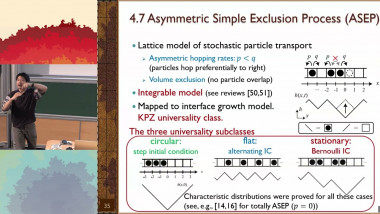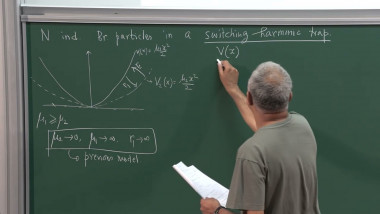
Introduction to the Physics of the KPZ Universality Class (3/3)
By Kazumasa Takeuchi

Nonequilibrium Point Processes with Long-range Correlations Generated by Stochastic Resetting (3/3)
By Satya N. Majumdar
Appears in collection : 2025 IHES Summer School – Statistical Aspects of Nonlinear Physics
Joint work with Denis Ullmo (LPTMS) Game theory allows to model how agents can optimize their strategy in a competitive situation. In high density crowds, pedestrians compete for space. When the number of agents becomes large, the problem can be made tractable through a mean-field hypothesis [1]. Some experiments of crowd deformation by an intruder [2] have revealed that, even at densities as high as 6 ped/m2 , pedestrians anticipate the passage of the intruder in a way that none of the existing crowd models of that time could capture. In particular they behave very differently from granular matter. Crowd modeling based on Mean-Field Games (MFG) allowed for the first time to reproduce these experimental results [3], both for the density and displacement fields. In particular, the tuning of a single parameter - the anticipation horizon - allowed to account for several experimental conditions in which pedestrians have a variable level of information [4]. But it also raises numerical issues that will be discussed [5].
